reactablefmtr

The {reactablefmtr} package streamlines and enhances the styling and formatting of tables built with the {reactable} R package. The {reactablefmtr} package provides many conditional formatters that are highly customizable and easy to use.
Conditionally format tables with color scales, color tiles, and data bars. Assign icons from Font Awesome with icon assign and icon sets.
Interactive sparklines that are highly customizable and available in line or bar format.
Custom table themes that can easily be applied to any {reactablefmtr} or {reactable} table.
Embed images directly from the web into your table.
Save tables as static PNG files or as interactive HTML files.
For more examples, check out the vignettes. To stay up to date with the latest upgrades to the development version, be sure to follow the package news.
Installation
The {reactablefmtr} package is available from CRAN and can be installed with:
install.packages("reactablefmtr")Or install the development version of {reactablefmtr} with:
remotes::install_github("kcuilla/reactablefmtr")Why reactablefmtr?
The {reactable} package allows for the creation of interactive data tables in R. However, styling tables within {reactable} requires a lot of code, can be difficult for many R users (due to the need to understand HTML and CSS), and not scalable. For example, here is the current method of creating bar charts within {reactable}:
library(reactable)
library(htmltools)
data <- MASS::Cars93[20:49, c("Make", "MPG.city", "MPG.highway")]
bar_chart <- function(label, width = "100%", height = "16px", fill = "#15607A", background = "#EEEEEE") {
bar <- div(style = list(background = fill, width = width, height = height))
chart <- div(style = list(flexGrow = 1, marginLeft = "8px", background = background), bar)
div(style = list(display = "flex", alignItems = "center"), label, chart)
}
reactable(
data,
columns = list(
MPG.city = colDef(align = "left", cell = function(value) {
width <- paste0(value / max(data$MPG.city) * 100, "%")
bar_chart(value, width = width)
}),
MPG.highway = colDef(align = "left", cell = function(value) {
width <- paste0(value / max(data$MPG.highway) * 100, "%")
bar_chart(value, width = width)
})
)
)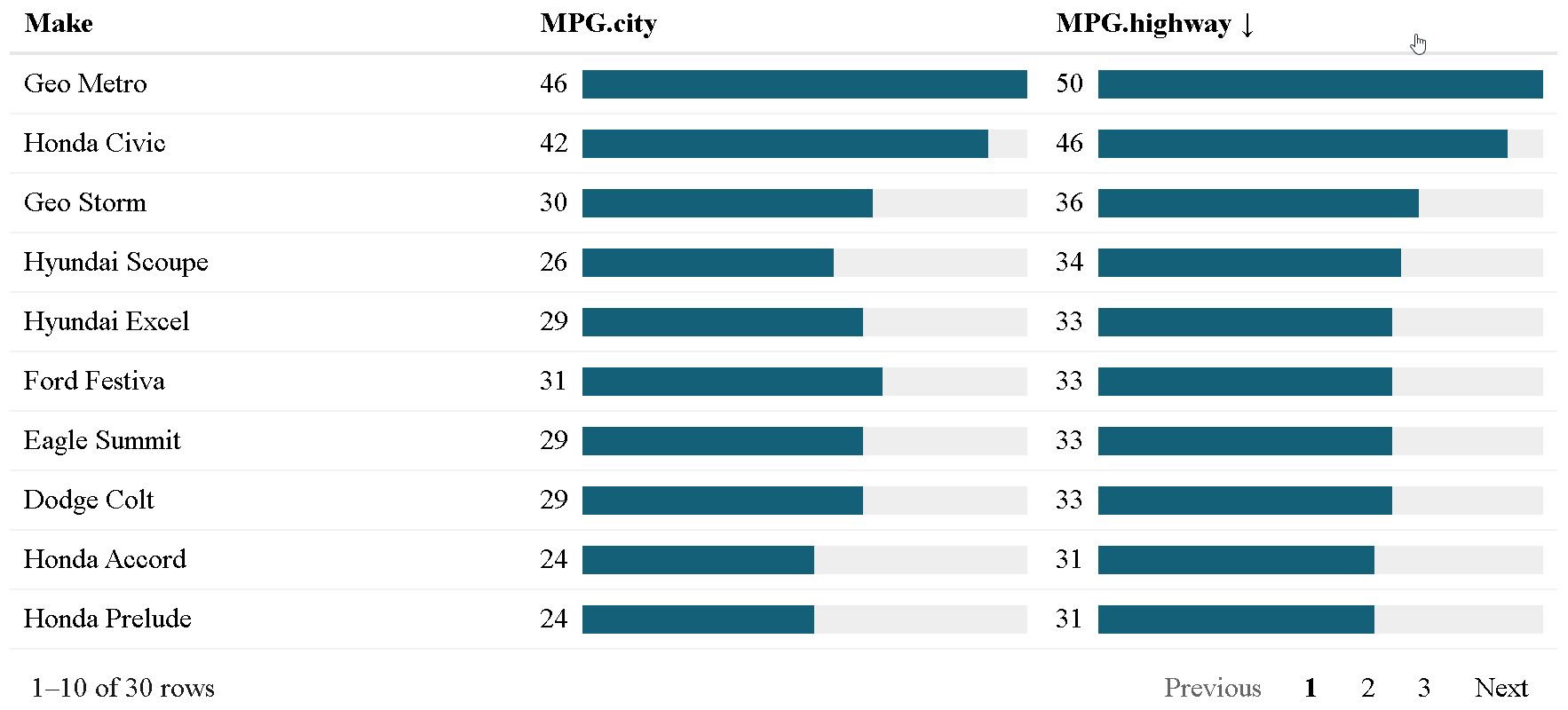
The {reactablefmtr} package presents a much simpler method of
creating bar charts with the data_bars() function. In
addition to needing far less code, there are also a multitude of
customization options available to easily change the appearance of the
bar charts, and as an added bonus, the bars animate on sort!
library(reactablefmtr)
reactable(
data,
defaultColDef = colDef(
cell = data_bars(data, text_position = "outside-base")
)
)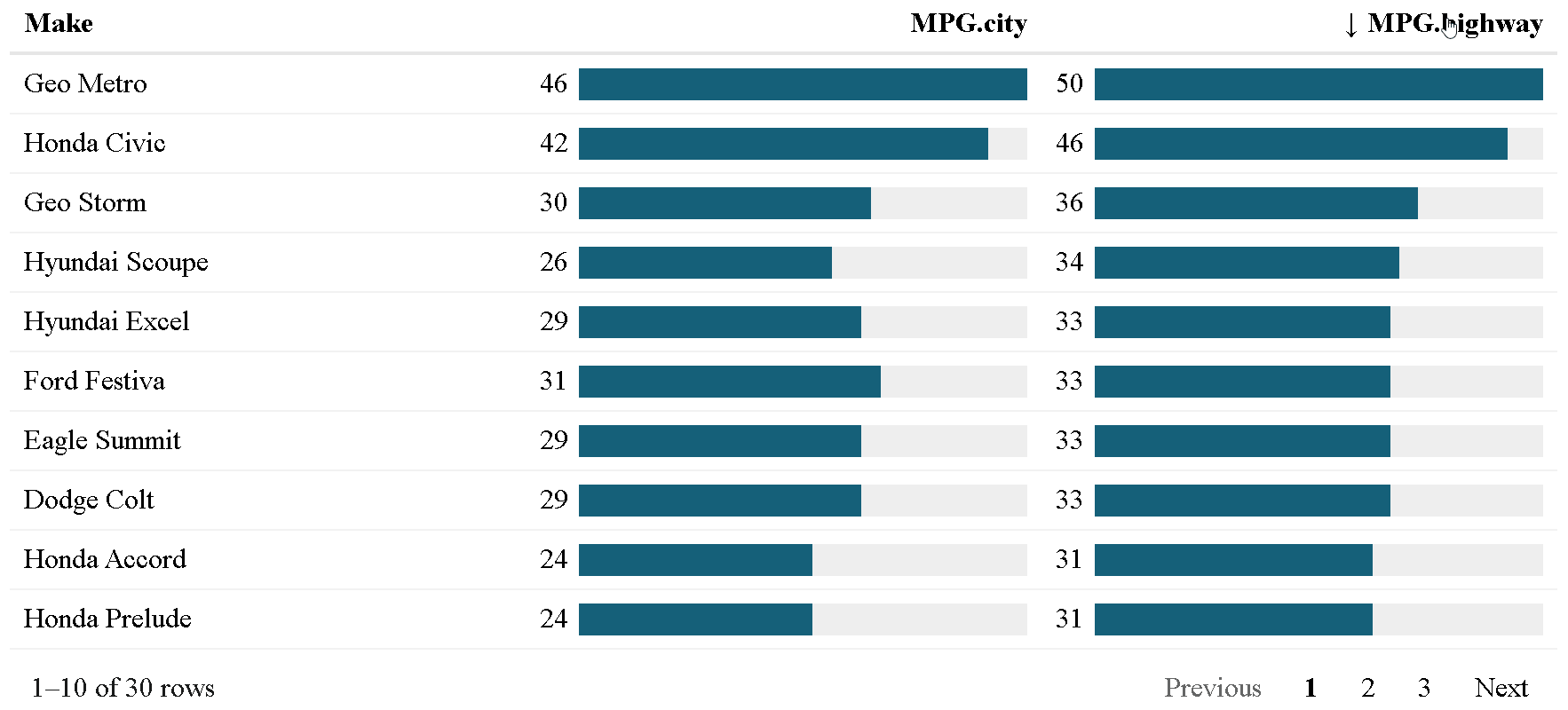
Examples
Data Bars
Use data_bars() to assign horizontal bars to each row.
There are many ways to customize
the look of data_bars(), including the alignment of the
bars, the position of the text labels, and the option to add icons and
images to the bars. See the tutorial
for customization examples.
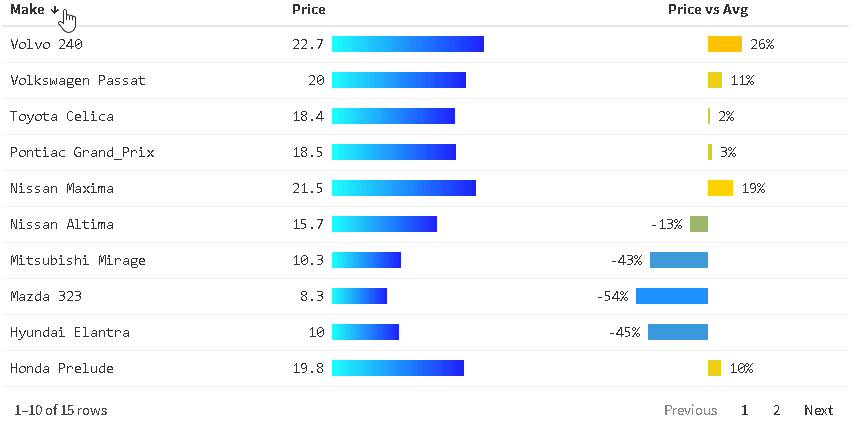
Sparklines
Use react_sparkline() to create sparklines or
react_sparkbar() to create sparkline bar charts. The
sparklines are highly customizable and interactive. As you hover over
each data point, the value will appear. The sparklines are imported from
the {dataui}
package, so this package will need to be downloaded from GitHub in order
to use this feature.
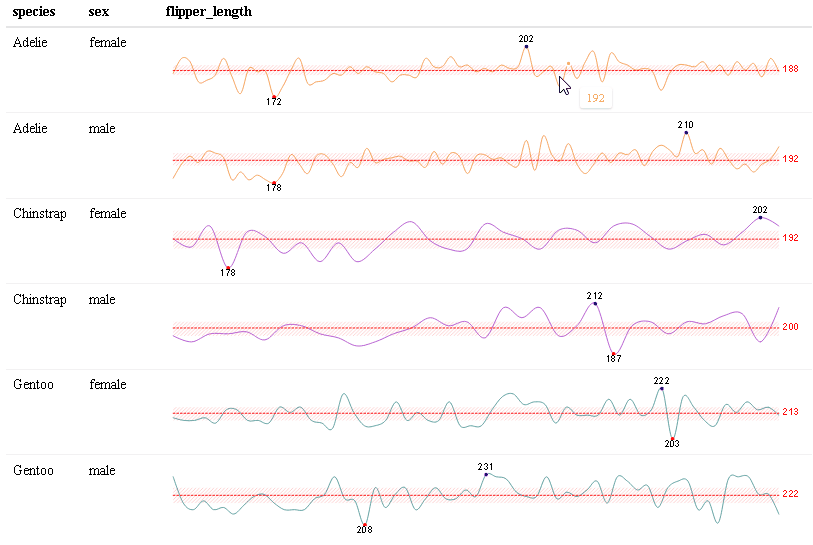
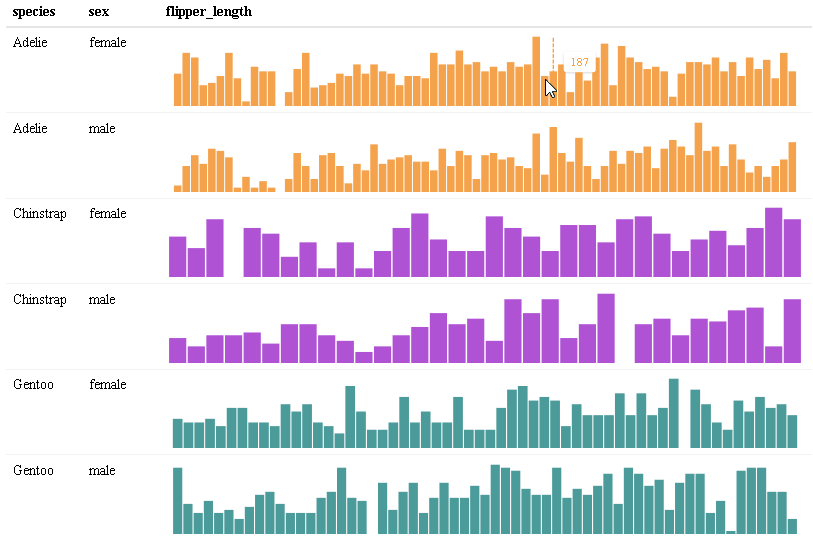
Color Scales
Use color_scales() to assign conditional colors to cells
based on their relative values. The color of the text in the cells
automatically adjusts based on the shade of the cell color, allowing the
use of dark-colored palettes. See the tutorial
for more examples.
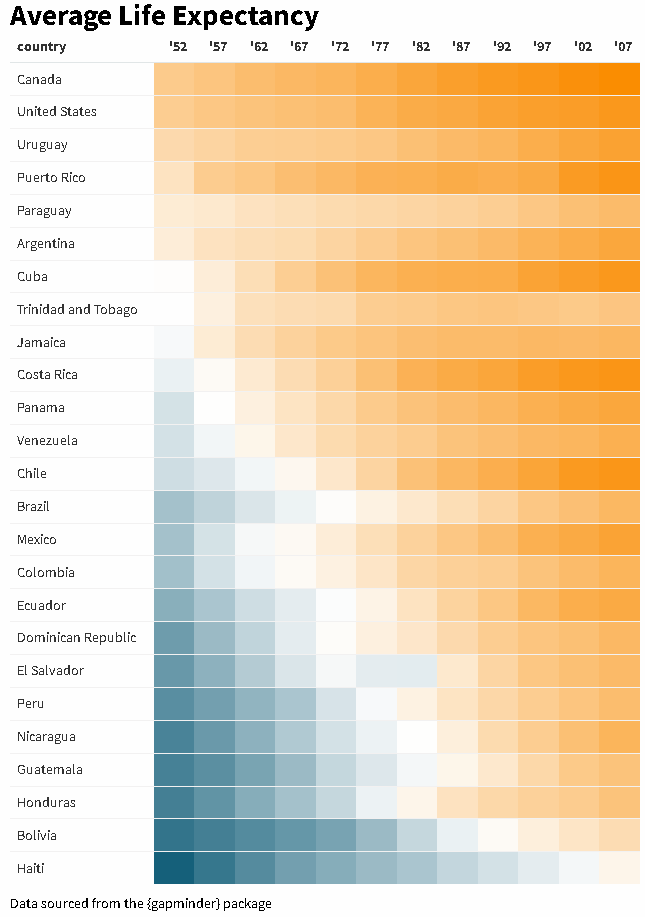
Bubble Grids
Bubble grid tables can be created using bubble_grid().
Bubbles can be shown as circles or squares using the shape
parameter. To see how the example below was created, please check out
the bubble
grids section in the {reactablefmtr} cookbook:
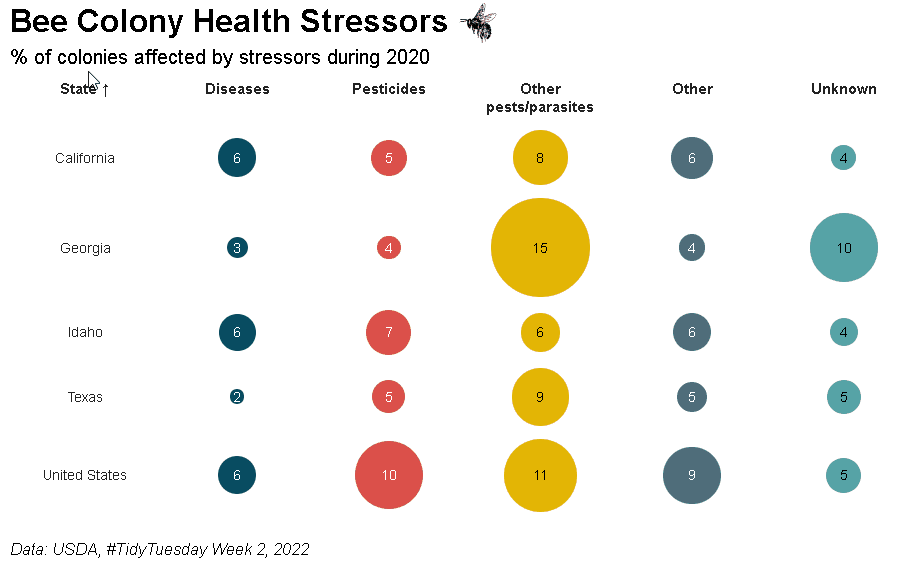
Custom Themes
Within {reactablefmtr}, there are 24+ custom table themes. The themes include bootstrap themes, themes inspired by news/sports sites such as The New York Times, FiveThirtyEight, and ESPN, as well as other custom themes that can only be found within {reactablefmtr}. The themes can be applied easily to tables by simply referencing the theme name. Additional customization options, such as changing the font size, font color, etc. are also available.
An example of the fivethirtyeight() theme:
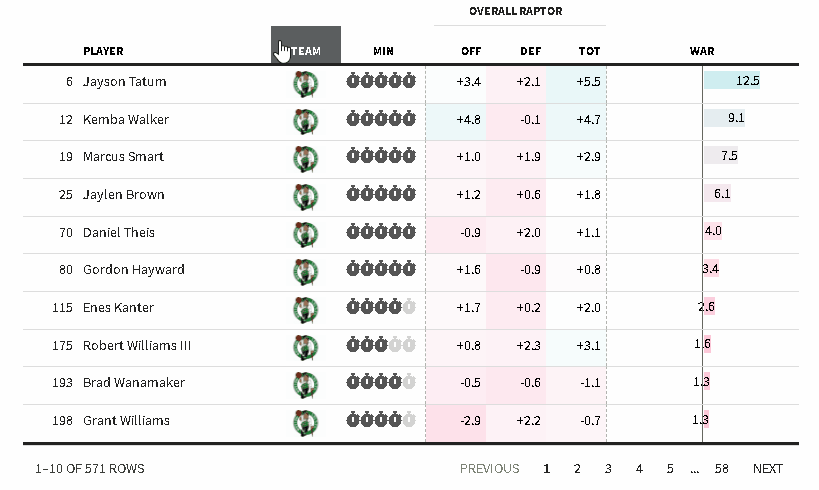
Using with Crosstalk or Shiny
{reactablefmtr} works well when linked to UI controls via {crosstalk} or within a Shiny app.
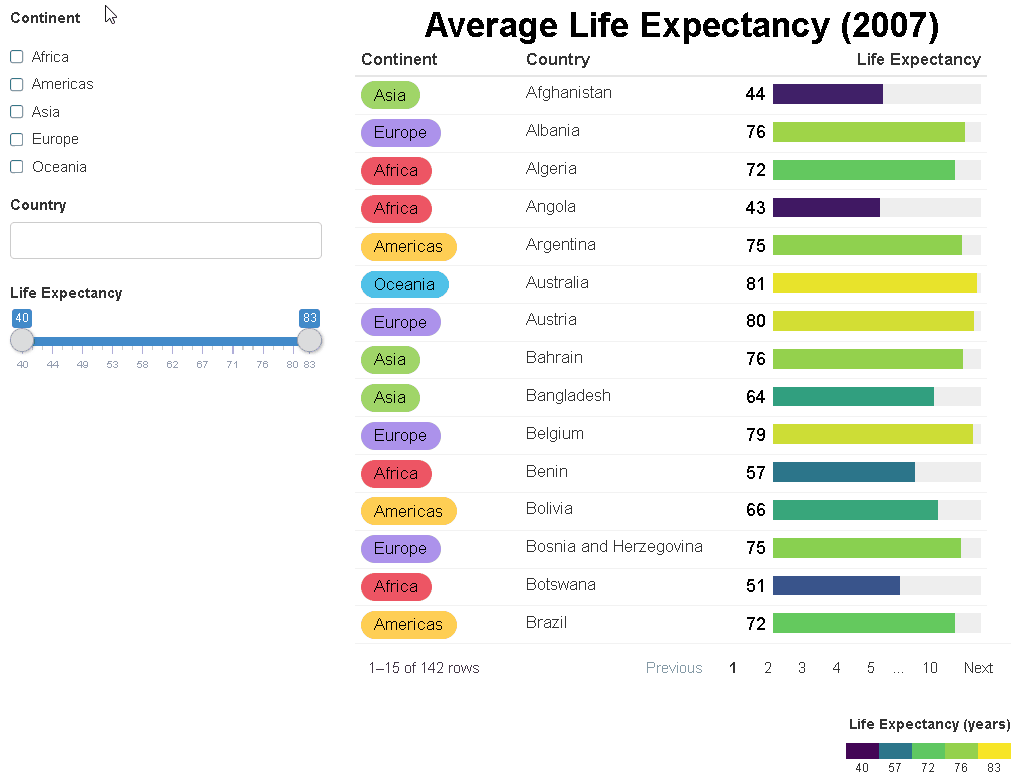
Add a Title, Subtitle, and Source
Titles and subtitles can be easily placed above any {reactablefmtr}
or {reactable} table with add_title() and
add_subtitle(). Also have the option to include a source
below a table with add_source(). Additional customization
options such as changing the alignment, font size, font family, font
style, and font color are available within each formatter.
reactable(iris[10:29, ]) %>%
add_title("This is a title") %>%
add_subtitle("This is a subtitle") %>%
add_source("This is a source")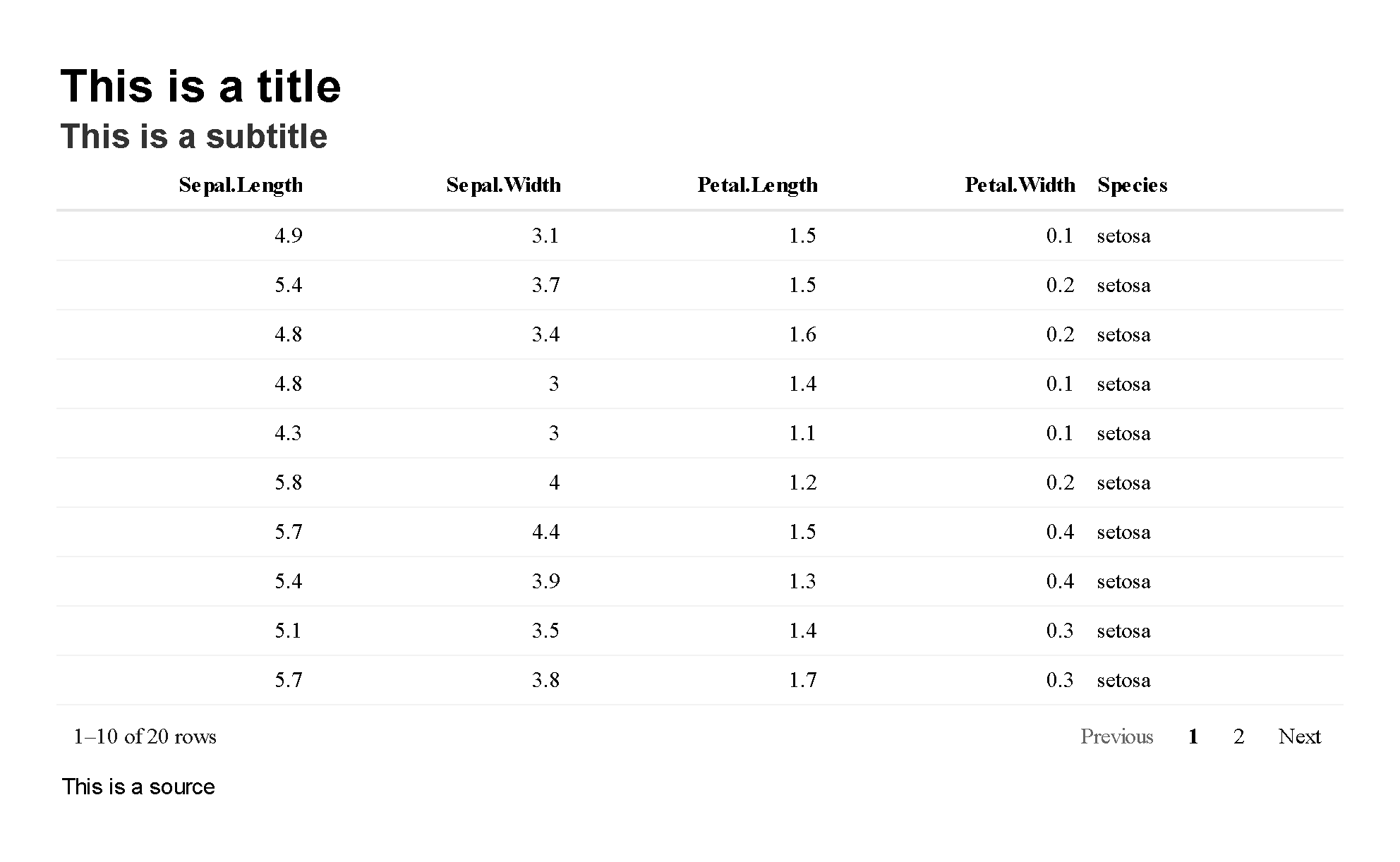
Create Data Visualizations
Who says {reactablefmtr} can just be used to make tables? You can create data visualizations like the one shown below. Source code
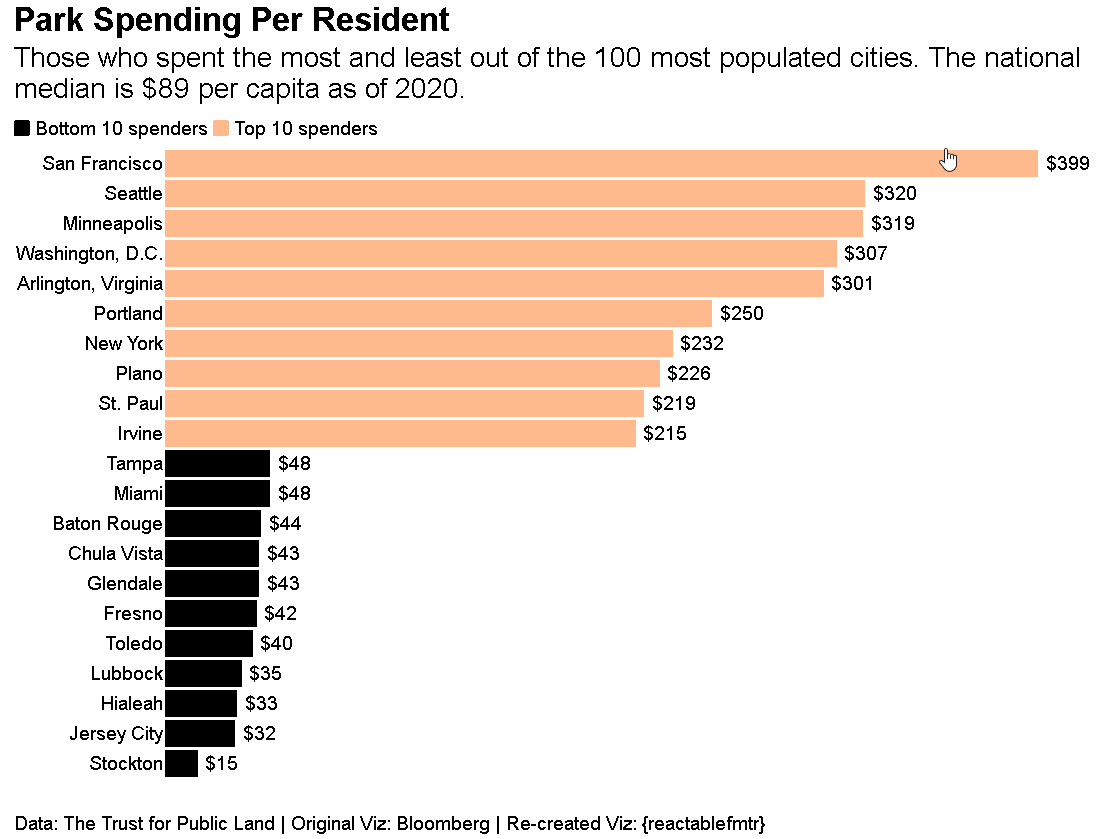
Save Static or Interactive Tables
{reactablefmtr} or {reactable} tables can be saved directly to a file
as a static PNG image or as an interactive HTML file with
save_reactable().
Save as a PNG file:
save_reactable(table_name, "table.png")Save as an HTML file:
save_reactable(table_name, "table.html")If custom CSS styling is applied to the table within an R Markdown document:
save_reactable("table_name.Rmd", "table.png")If you prefer to use a pipe:
table_name %>%
save_reactable("table.png")Acknowledgments & Contributions
A huge thank you to Greg Lin for creating the amazing {reactable} package! Without Greg, {reactablefmtr} simply would not exist!
Thank you to Kent Russell for putting together the wonderful {dataui} package and suggesting integrating the code with {reactablefmtr} to allow interactive sparkline customization in reactable tables.
Last but not least, thank you to those below who have contributed to the development and/or documentation of the package! @yjunechoe, @shannonpileggi, @TimTeaFan